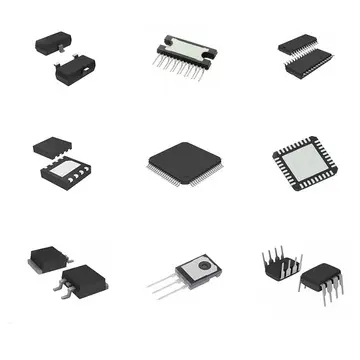What are the basic knowledge of electronic components?
Electronic components are mainly composed of electronic devices and electronic components. Electronic components are components of electronic components and small and medium-sized electrical equipment and instruments. They are often composed of multiple parts and can be used universally in the same industry. The following mainly introduces the basic knowledge of common electronic components.
Basic knowledge of electronic components-resistance
Resistance: The resistance of a conductor to current is called resistance, represented by the symbol R, and the units are ohms, kiloohms, and megohms, represented by Ω, KΩ, and MΩ respectively.
The model naming method of resistors: The model of domestic resistors consists of four parts (not applicable to sensitive resistors) ① Main name ② Material ③ Classification ④ Serial number
The main name, represented by letters, indicates the name of the product. For example, R represents resistance and W represents potentiometer.
Materials, represented by letters, indicate what materials the resistor is made of, T-carbon film, H-synthetic carbon film, S-organic solid, N-inorganic solid, J-metal film, Y-nitride film, C-deposited film , I-glass glaze film, X-wire winding.
Classification is generally represented by numbers, and individual types are represented by letters, indicating what type the product belongs to. 1-normal, 2-normal, 3-ultra high frequency, 4-high resistance, 5-high temperature, 6-precision, 7-precision, 8-high voltage, 9-special, G-high power, T-adjustable.
Serial number, represented by numbers, indicates different varieties of similar products to distinguish the appearance dimensions and performance indicators of the products. For example: R T 1 1 type ordinary carbon film resistor
Classification of resistors: ① wirewound resistors ② thin film resistors: carbon film resistors, synthetic carbon film resistors, metal film resistors, metal oxide film resistors, chemical deposition film resistors, glass glaze film resistors, metal Nitride film resistors ③ Solid resistors ④ Sensitive resistors: varistor, thermistor, photoresistor, force-sensitive resistor, gas-sensitive resistor, humidity-sensitive resistor.
Basic knowledge of electronic components-capacitor
Capacitors are one of the electronic components widely used in electronic equipment. They are widely used in DC blocking, coupling, bypass, filtering, tuning loops, energy conversion, control circuits, etc. Use C to represent the capacitance. The capacitance units include farad (F), microfarad (uF) and picofarad (pF). 1F=10^6uF=10^12pF
Capacitor model naming method The model of domestic capacitors generally consists of four parts (not applicable to pressure-sensitive, variable, and vacuum capacitors). They represent name, material, classification and serial number respectively.
Part 1: Name, represented by letters, capacitor is represented by C.
Part 2: Materials, represented by letters.
Part 3: Classification, generally expressed by numbers, and individually by letters.
Part 4: Serial number, represented by numbers. Use letters to indicate the material of the product: A-tantalum electrolysis, B-polystyrene and other non-polar films, C-high-frequency ceramics, D-aluminum electrolysis, E-other material electrolysis, G-alloy electrolysis, H-composite dielectric, I-glass glaze, J-metallized paper, L-polyester and other polar organic films, N-niobium electrolysis, O-glass film, Q-paint film, T-low frequency ceramics, V-mica paper, Y-mica, Z -paper media
Basic knowledge of electronic components-inductor
The inductor coil is made of wires wound around an insulating tube. The wires are insulated from each other. The insulating tube can be hollow or contain an iron core or magnetic powder core, referred to as an inductor. Expressed by L, the units include Henry (H), milli-Henry (mH), micro-Henry (uH), 1H=10^3mH=10^6uH.
Classification of inductors
Classified by inductance form: fixed inductance, variable inductance. Classified according to the properties of magnetic conductors: air core coils, ferrite coils, iron core coils, and copper core coils. Classified by working nature: antenna coil, oscillating coil, choke coil, notch coil, deflection coil. Classified by winding structure: single-layer coil, multi-layer coil, honeycomb coil.
Main characteristic parameters of inductors
It often works with capacitors to form LC filters, LC oscillators, etc. In addition, people also use the characteristics of inductors to create choke coils, transformers, relays, etc.; the characteristics of inductors are exactly opposite to the characteristics of capacitors. It has the characteristics of preventing alternating current from passing through and allowing direct current to pass through.
There are many inductor coils on the radio, almost all of which are made of air-core coils wound with enameled wire or wound on a skeleton magnetic core or iron core. There are antenna coils (which are made of enameled wire wound on a magnetic rod), intermediate frequency transformers (commonly known as mid-circuit), input and output transformers, etc.



